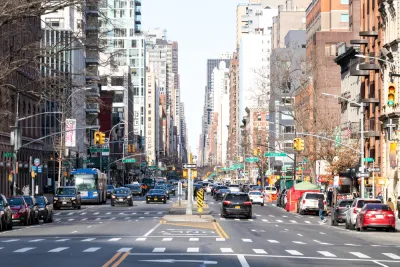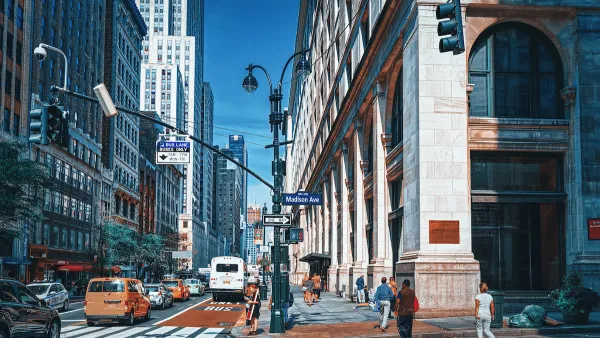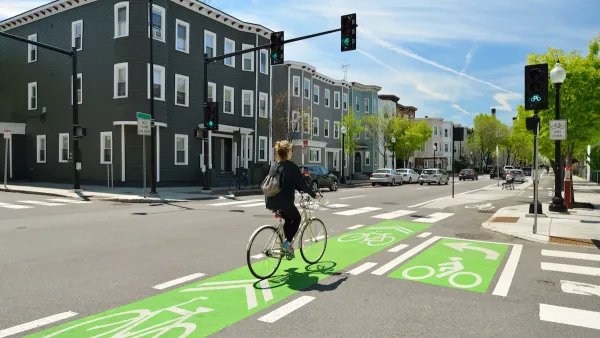The plan to reimagine Manhattan’s Third Avenue to make it safer for pedestrians and cyclists is being applauded by advocates, but some say the city should go further to provide more space for multimodal transportation.

A New York City street that some call “an inhospitable and dangerous traffic sewer” will soon be reimagined as a multimodal corridor, per a Streetsblog NYC article by Julianne Cuba.
After months of advocacy from local pols and activists — and a shiny spread in New York Magazine showcasing what a reimagined current seven-lane Third Avenue could be — the Department of Transportation on Wednesday night unveiled its plans to a Manhattan Community Board 8 panel to take away two lanes of moving traffic in order to make room for a protected bike lane and designated bus lane on the corridor between E. 59th and E. 96th streets.
According to Cuba, “The plan, which also includes taking away parking spaces near intersections to allow for pedestrian islands and shorter crossing times, will not only help cyclists, but also pedestrians and the more than 50,000 bus riders daily, who currently suffer from exhaustingly slow commutes on the more than 150 buses that traverse the thoroughfare.”
While approving of the new changes, some advocates want the city to install additional protective bike infrastructure and wider sidewalks, with the article indicating that “it’s well documented that the existing protected bike lanes on First and Second avenues are already overcrowded and in need of widening.”
Cuba notes that the project is expected to break ground next year, and plans for the rest of Third Avenue are yet to be finalized.
FULL STORY: Manhattan Panel Cheers City’s Third Ave. Redesign (Though Some Wish it Was Bolder)

National Parks Layoffs Will Cause Communities to Lose Billions
Thousands of essential park workers were laid off this week, just before the busy spring break season.

Retro-silient?: America’s First “Eco-burb,” The Woodlands Turns 50
A master-planned community north of Houston offers lessons on green infrastructure and resilient design, but falls short of its founder’s lofty affordability and walkability goals.

Delivering for America Plan Will Downgrade Mail Service in at Least 49.5 Percent of Zip Codes
Republican and Democrat lawmakers criticize the plan for its disproportionate negative impact on rural communities.

Test News Post 1
This is a summary

Test News Headline 46
Test for the image on the front page.

Balancing Bombs and Butterflies: How the National Guard Protects a Rare Species
The National Guard at Fort Indiantown Gap uses GIS technology and land management strategies to balance military training with conservation efforts, ensuring the survival of the rare eastern regal fritillary butterfly.
Urban Design for Planners 1: Software Tools
This six-course series explores essential urban design concepts using open source software and equips planners with the tools they need to participate fully in the urban design process.
Planning for Universal Design
Learn the tools for implementing Universal Design in planning regulations.
EMC Planning Group, Inc.
Planetizen
Planetizen
Mpact (formerly Rail~Volution)
Great Falls Development Authority, Inc.
HUDs Office of Policy Development and Research
NYU Wagner Graduate School of Public Service





























